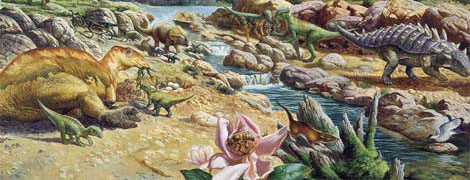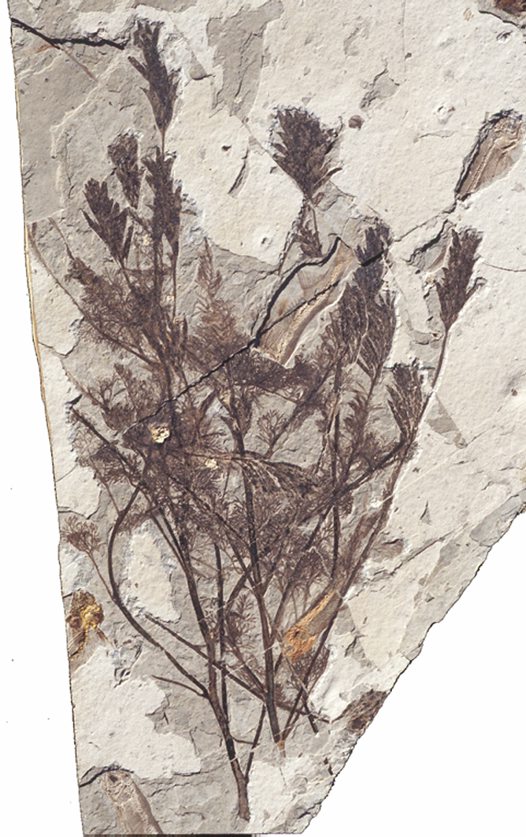 |
 |
 |
 |
 |
Produced
by the Population Genetics and Evolution class, Furman University |
||||
 |
 |
 |
 |
 |
Produced
by the Population Genetics and Evolution class, Furman University |
||||
 |
The
Cretaceous: Archaefructus |
 |
||
| Archaefructus,
considered to be the earliest known flowering plant, was discovered in
Liaoning, China (Sun G et al. 1998). Carpels are distinctly formed, with
seeds enclosed, and anthers are located beneath the female structures,
resembling modern flowers (Stokstad 2002). These plants suggest that flowering
plants first inhabited aquatic environments and were weedy herbs, not
having originated from woody plants as previously believed (Stokstad 2002).
Archaefructus gained much of their attention due to their reproductive
structures, which had several features that are quite different from modern
flowers. For example, they did not have petals or sepals, and their stamens
came in pairs that were located underneath the carpels (Sun G et al. 2002).
Morphological comparisons to other plant species revealed that Archaefructus
are closely related to angiosperms (Sun G et al. 2002). The presence of
the paired stamens represents a significant step in angiosperm evolution,
since their male and female reproductive organs are believed to have first
developed on separate shoots (Stokstad 2002). Because of continued uncertainties
in where Archaefructus stands in the evolutionary history of
flowering plants, their relation to other species, particularly angiosperms,
are still debated. Page by LinLin Zhao |
 |
| Archaefructus fossil. Photo from: The Australian Museum. | |
| Stokstad E. 2002. Fossil plant hints how first flowers blomed. Science 296: 821. Sun G, Ji Q, Dilcher DL, Zheng S, Nixon KC, and Wang X. 2002. Archaefructaceae, a new basal angiosperm family. Science 296: 899-904. Sun G, Dilcher DL, Zheng S, and Zhou Z. 1998. In search of the first flower: a Jurassic angiosperm, Archaefructus, from northeast China. Science 282: 1692-1695. . |